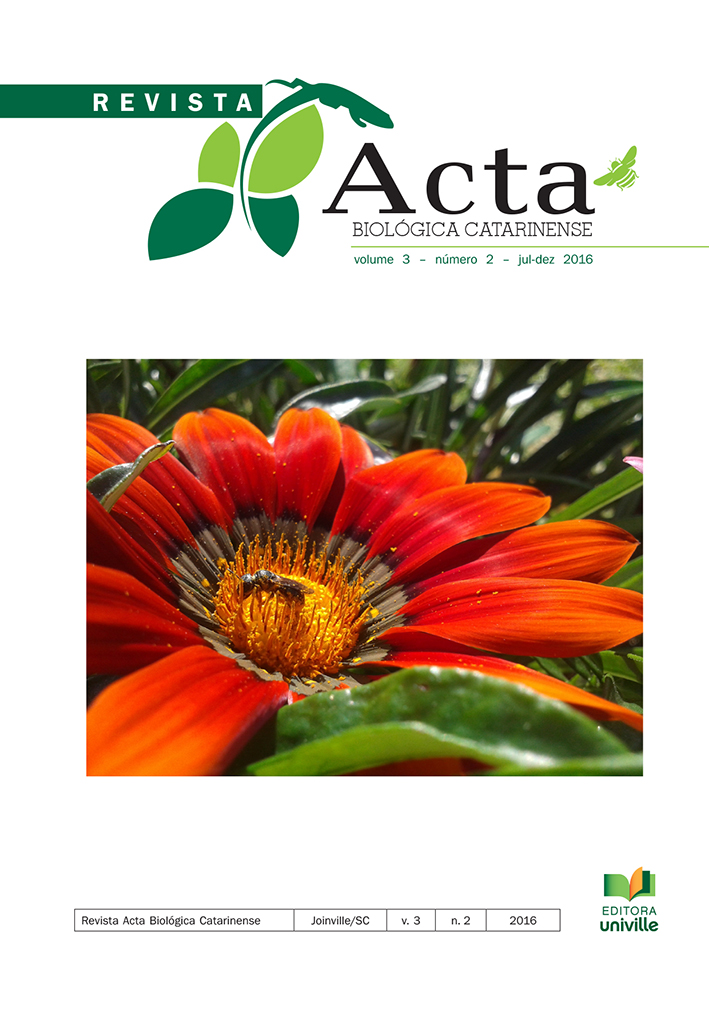Nesting patterns of bees (Apidae) in brick walls in southern Brazil
DOI:
https://doi.org/10.21726/abc.v3i2.475Palavras-chave:
Behavior; Caenohalictus incertus; Leiopodus lacertinus; Melitoma segmentaria; solitary bees.Resumo
Aiming to verify the nesting pattern of solitary bee species, a study was performed (October 2012 to March 2013) in Joinville, SC, southern Brazil, along a brick wall. There were found the following species Melitoma segmentaria (Emphorini), Caenohalictus incertus (Halictini) and Leiopodus lacertinus (Protepeolini). 147 nests showed activity in the sampling period (118 of C. incertus, 29 of M. segmentaria), 98% located in the masonry. For M. segmentaria, 29 active nests were observed (density of 4.53/ m2 ), with an average distance of 12.22 cm between them, 17 nests between the ground and 90 cm high, distributed in aggregated form (R = 0.004, p p <0.02). The nests opening measured on average 0.9 cm in diameter (n =29), two of them with a mud tower entrance 0.6 cm high, with a smooth inner wall and a outer, rough. For C. incertus, 118 active nests were observed (density of 18.43/ m2 ), with a mean distance of 8.18 cm from each other, 98 nests between the ground and 70 cm high, distributed in aggregated form (R = 0.066, p <0.09). Individuals of L. lacertinus were noticed in all observations days, at the entrance of nests of M. segmentaria. Anthrax cf. virgo emerged from M. segmentaria nests.


